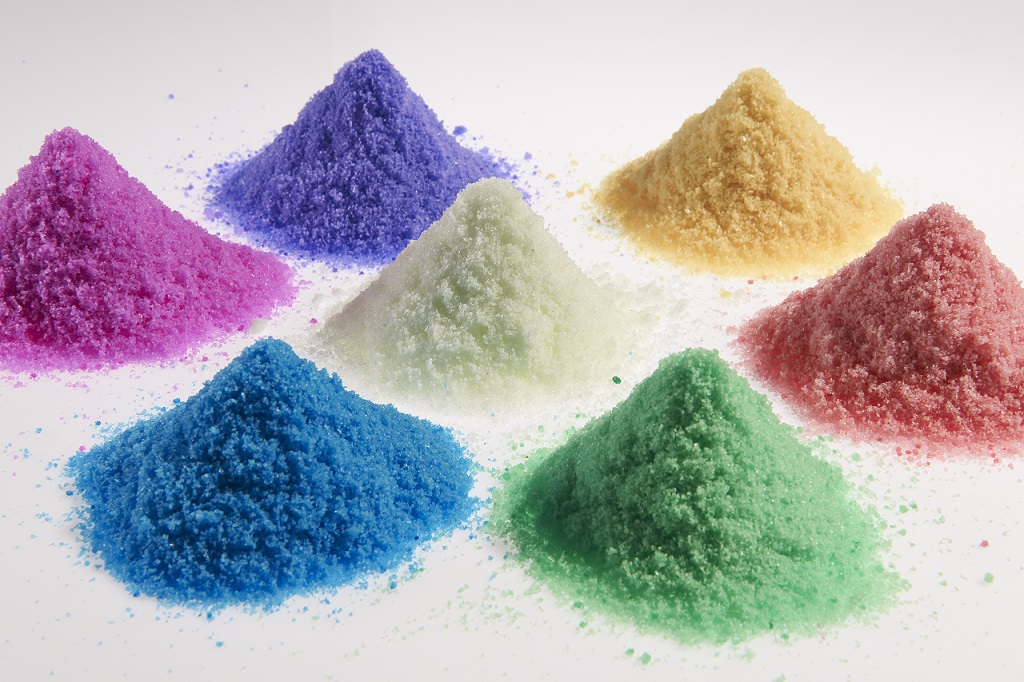Color has a new role in agriculture and fertilizers
August 13, 2019 by Adam NewberryAnnual fertilizer sales today total more than USD180-billion – the International Fertilizer Association says that’s three times more than crop protection sales, three times more than seed sales and more than twice agricultural machinery sales. It’s also set to grow. The UN’s Food and Agriculture Organization’s ‘World Fertilizer Trends and Outlook to 2020’ Report has forecast that world consumption of the three main fertilizer nutrients – nitrogen, phosphorus and potassium will grow around 2% from 2015 – 2020. Global production capacity of fertilizers is also expected to increase.
“Two out of every five people on Earth today owe their lives to the higher crop outputs that fertilizer has made possible. It helped fuel the Green Revolution that lifted hundreds of millions of people around the world out of poverty,” said Bill Gates.
Fertilizers continue to play an important role today, and will tomorrow, as we look for solutions to tackle the global issue of how to feed a growing population, which, according to UN forecasts will increase by 1-billion people in the next decade, reaching 8.6 billion by 2030. Innovation in fertilizer development and application will be crucial.
How colorants maximize the benefits of fertilizers
One of these key innovations will be how the use of color can help farmers and growers maximize the benefits of fertilizers. Two key reasons for the use of colorants in fertilizers, seed treatment and crop protection, are indication and identification.
‘Indication’ is a visual cue to represent the presence of a particular material or item. It is hard, for example, to indicate that white salt is present in a glass of water because it forms a clear and colorless solution, but you would quickly realize it upon tasting. Adding coloring to the salt first, however, will make it immediately very apparent when it is also in an aqueous salt solution.
‘Identification’ highlights a specific item or trait amongst many options. Vegetable farming provides a great case study. A farmer may need different fertilizer blends depending on which crop is being addressed. But, when you are in the height of the season and they all look alike, it can be difficult to ensure the appropriate fertilizer is matched with the relevant crop. This can lead to costly mistakes. One easy solution would be to color a tomato-specific fertilizer red and one designed for leafy vegetables green. Fertilizer with color can be utilized for more than just a visually pleasing afterthought, it can be a valued contributor to a formulation.
Milliken’s Global Strategy Development and Product Manager, Adam Newberry, said that in recent years there have been a number of technical and scientific advances in this area, “These new technical breakthroughs have helped farmers to maximize the benefits of fertilizers’ and limit their impact on the environment. We have taken learnings from other
industries, such as seed, turf & ornamental, and industrial vegetation management, and have translated some of these key value aspects to fertilizer.”
He went on to explain, “Contributing to these innovations is Milliken’s Liquitint Agro fertilizer colorants. These colorants are highly beneficial in fertilizer formulations, by allowing consumers to identify different brands and types of fertilizer and help to prevent under-and-over application by providing an application indicator. They also provide significant advantages over traditional options in the manufacturing and handling of fertilizers.”
Liquitint Agro colorants employ a breakthrough new technology and are neither traditional pigments nor dyes. Their unique nature makes them inherently liquid. They also exhibit non-staining characteristics. As such they allow many interesting and beneficial properties for the fertilizer manufacturers and agricultural growers.

The stain challenge of colorants for fertilizers
A common concern of growers using colorants in fertilizer is that traditional powdered colors are dusty and messy to work with. They have the tendency to spread and color not just the fertilizer and the crop, but everything they come into contact with.
Alternatively, liquid dispersions or solutions are available for some fertilizer colorants but these have many inherent issues including low color concentration, poor shelf-life, high water content, poor carrier compatibility and poor coverage.
Liquitint Agro soluble colorants are suitable for many types and grades of fertilizers. They eliminate the hazardous dust associated with powdered dyes and pigments, helping to reduce the risk to employees and customers, and are not formulated with heavy metals during manufacturing.
Other benefits of this technology include; deep and bright colors to highlight high quality fertilizers, broad blendability, high chemical stability and easy handling. Further, Liquitint Agro creates greater inventory flexibility because it is possible to blend thousands of colors from across the spectrum on demand from only three to four liquid colors held in inventory. This advantage supplements the benefits of quick color changes between batches, no dusting and staining of a plant, as well as no detrimental issues for the fertilizer product.
At Milliken we believe color can play a significant and highly beneficial role in fertilizer formulations, benefitting manufacturers, users and the planet. Senior New Business Development Manager (EMEA), Philippe Scheerlinck said, “the new opportunities created for manufacturers to easily utilize bright and deep colours, and highlight quality and breadth of product offering, will advance greater acceptance for coloration in this industry segment.”
